Discover the Microverse Scientific Image and Film Competition
First prize
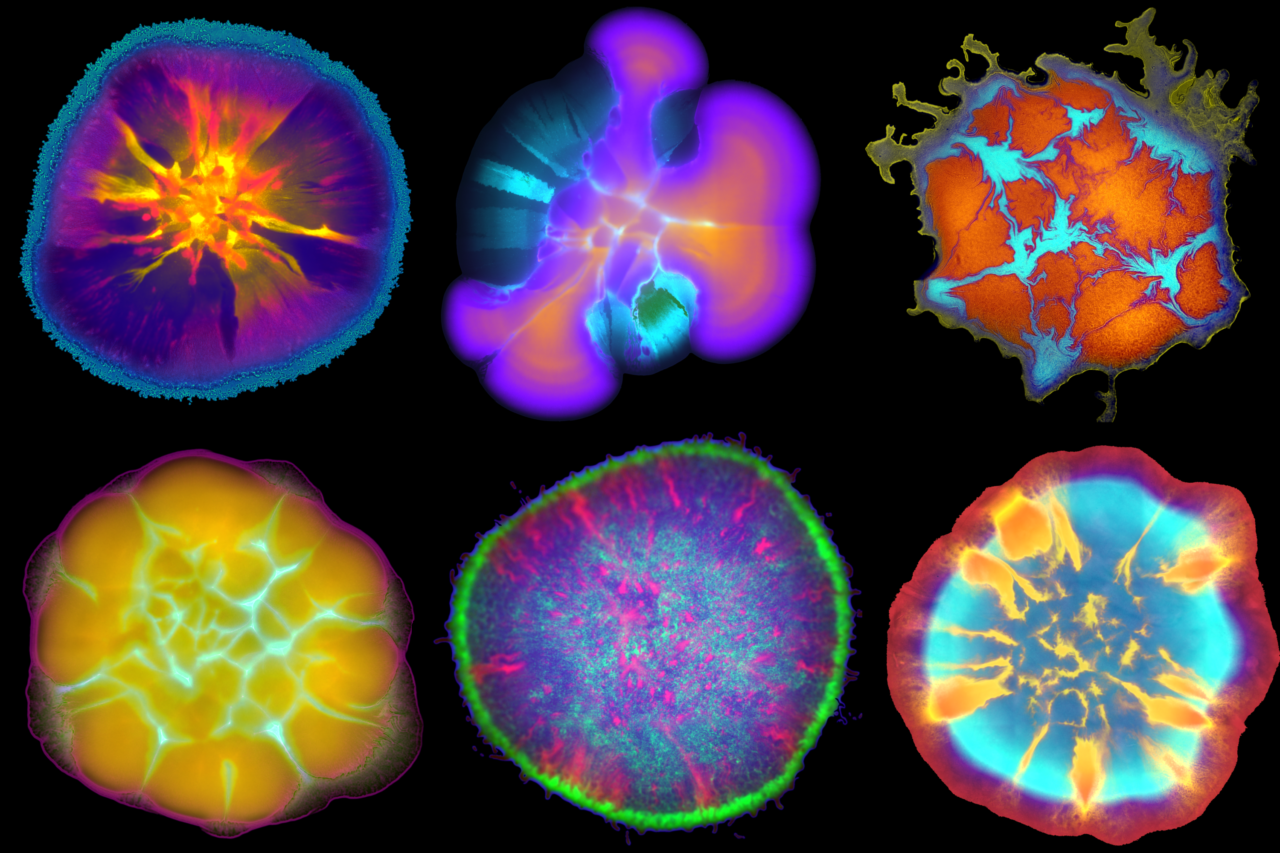
Bacterial beauty by Sean Booth (University of Oxford) won the first prize in the image category.
What happens when different kinds of bacteria interact? It’s actually hard to tell! Bacteria are microscopic, and transparent. But, we can genetically engineer them to produce different colors, and use fluorescence microscopy see these colors. By combining these techniques, we can produce images that show how bacteria interact with each other. Within each image, each color is a different type of bacteria. Each kind of bacteria has different features such as the ability to move or produce a protective coating on their cells. When grown together their interactions result in these amazing patterns that showcase the beauty of the bacterial world!
Honourable mentions
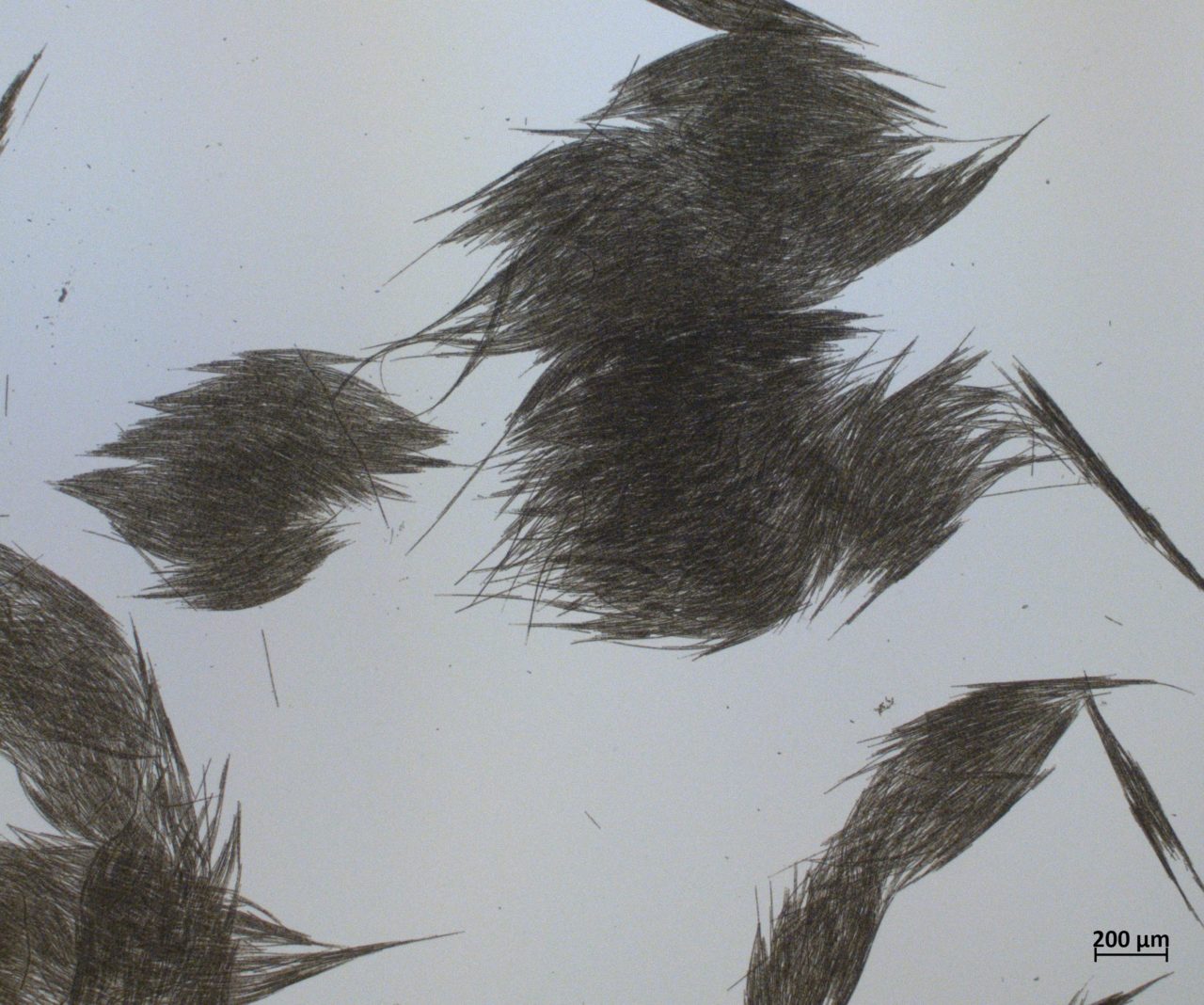
Winter bloom of cyanobacteria
by Tania Shishido Joutsen (University of Helsinki, Finland)
Cyanobacteria blooms commonly occur during the summer period worldwide, however this accumulation of Aphanizomenon was occurring under an ice layer in the Baltic Sea during the winter (January, 2022). Will climate change effects increase the occurrence of cyanobacteria over the winter? How toxic and harmful are these cyanobacteria?
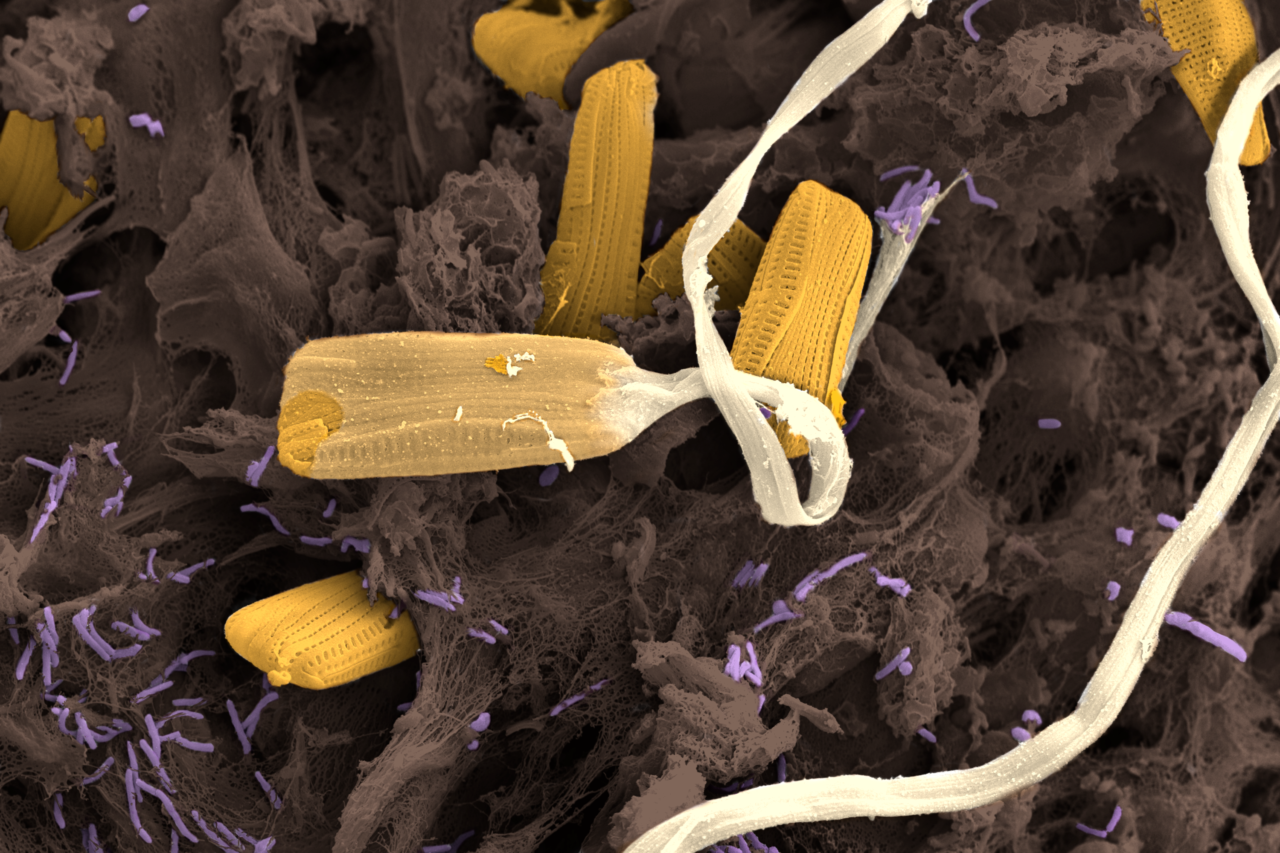
Microverse on the sea turtle’s shell
By Klara Filek (University of Zagreb, Croatia)
In ancient creation myths across the globe, the sea turtle has an essential role: it carries the whole world on its back. Today, we know with certainty that sea turtles carry different microbial worlds on their back instead of human civilizations. This is a scanning electron microscopy (SEM) image of a small piece of a sea turtle’s shell inhabited by microbes. As the methodology of SEM leads to only black and white images, this image was artificially colorized to emphasize bacterial cells (in purple) and microalgae diatom cells (in yellow). Making a home on great divers such as sea turtles can be difficult, so microbes need to find ways to securely attach to their host. Diatoms solve that problem by producing long stalks that stick to the cell on one side and to the turtle on the other. Bacteria are also known for producing sticky sugars around their cells to be able to adhere to surfaces and protect themselves from harmful changes in the environment. Together, bacteria and diatoms are the first colonizers of the sea turtles’ shells, and they prepare the ground for colonization by other marine microbes.
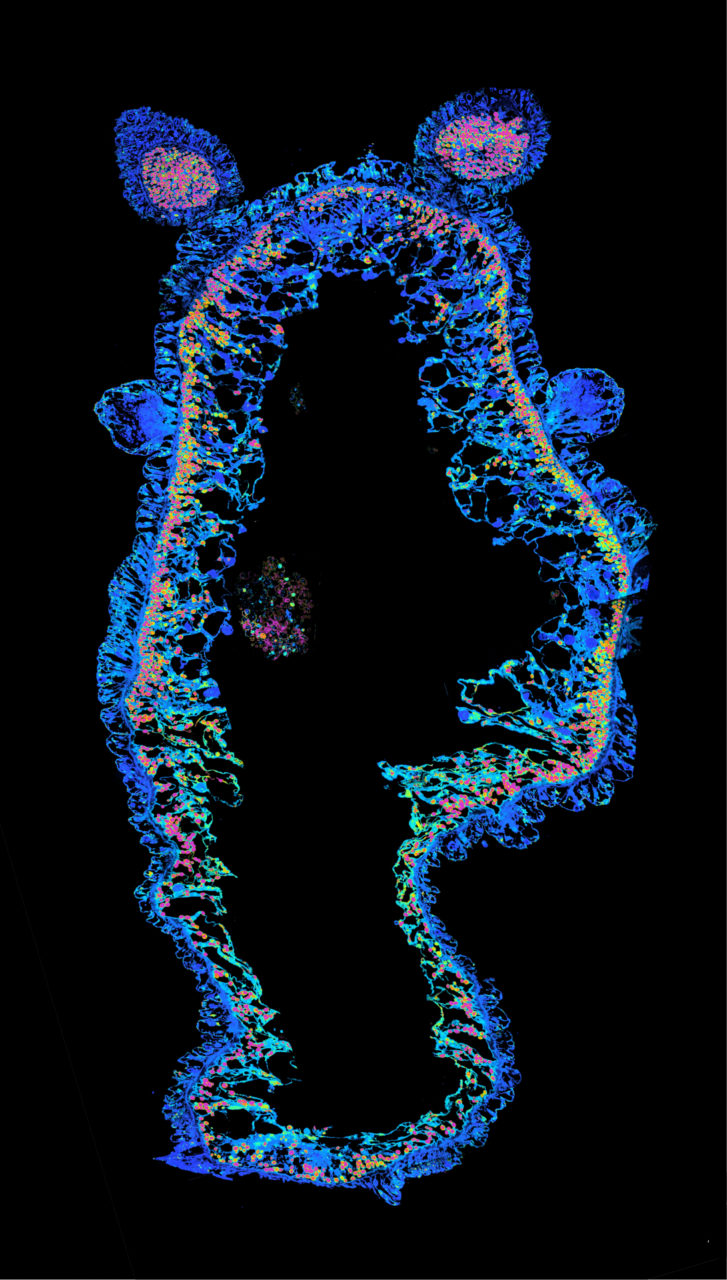
Symbiotic engine
by Nils Raedecker (EPFL, Switzerland)
Green Hydra (Hydra viridissima) are small freshwater hydrozoans living in a close symbiosis with green algae residing inside their gastrodermal cells. In this symbiosis, constant nitrogen limitation ensures that the algae release photosynthetic products such as sugars to the host. This image consists of more than 120 individual NanoSIMS images to visualize the uptake of ammonium throughout the entire body of Green Hydra (maximum = high uptake, blue = minimal uptake). This enables us to investigate how algae compete with each other and their host for available nitrogen and how this competition affects the symbiosis.
Public vote
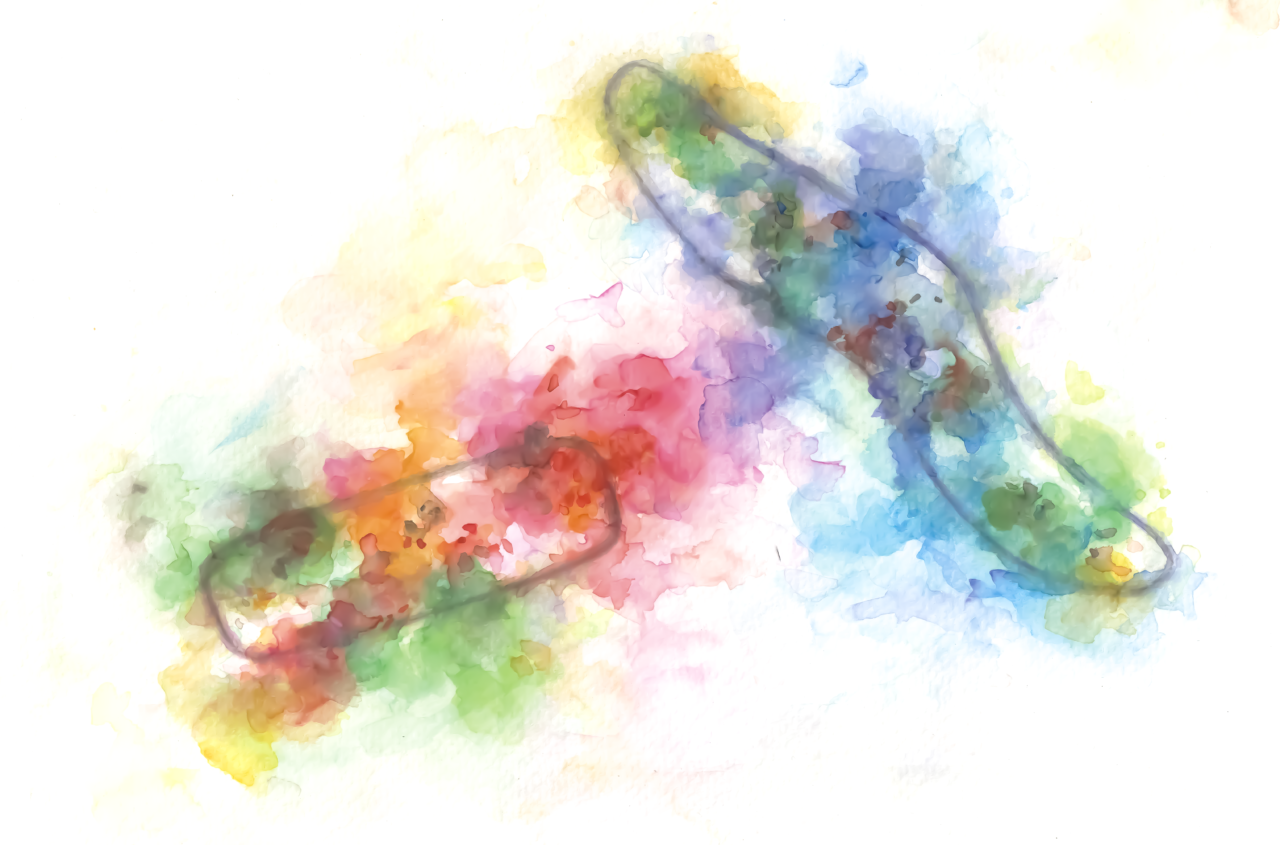
Why is metabolite exchange so important for microorganisms? Some microbes cannot synthesize one or more necessary metabolites required for their growth and rely on other microbes to produce these compounds. Microbes transport metabolites into and out of their cells, which creates a metabolic flux. The transport of metabolites into cells creates an influx, which can drive surrounding microbes to export more metabolites out of their cell, thereby facilitating the exchange of metabolites between different microbes. Microbes live better together than alone – and metabolite exchange enables their cooperation and survival.
Scientific film competition
The short film Microbial Loop by Christien Laber (Linnaeus University, Sweden) won both the jury and the public vote.
Olga Bernadet (University of Groningen, the Netherlands) was awarded an honourable mention for her stop-motion film City of Bacteria.